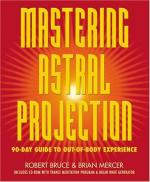|
This section contains 391 words (approx. 2 pages at 300 words per page) |
 One method of projection. © First Light/Corbis. Reproduced by permission.
One method of projection. © First Light/Corbis. Reproduced by permission.
Because the earth is a sphere, all flat maps of its surface contain inherent distortions. Map projections represent a curved land surface in two dimensions while minimizing these unavoidable errors of shape, distance, azimuth, scale and area. Most projections accurately portray one type of geographical information at the expense of another type, and cartographers choose a projection based on a map's intended use. A conformal projection, for example, shows relatively undistorted shapes, but inaccurate areas, while an equal-area projection makes the opposite choice. The Mercator projection is accurate at the equator but becomes progressively more distorted toward the poles, while polar stereographic maps preserve high-latitude coordinates at the expense of equatorial regions. The Mercator map of the world is responsible for the mistaken impression that Greenland covers almost as large an area as Africa.
The method of projecting a sphere onto a two-dimensional surface defines three classes of map projections: cylindrical, conic, and azimuthal. The alignment of the projection cylinder, cone, or plane relative to the globe further divides these classes into subtypes. Cylindrical equal-area, Mercator, Miller cylindrical, oblique Mercator, and transverse Mercator are all cylindrical map projections. Mercator maps have straight, evenly spaced lines of latitude and longitude that intersect at right angles, and are undistorted in scale at the equator, or at two lines of latitude equidistant to the equator. Mercator maps are useful for marine navigation because straight lines drawn on the map are true headings. Transverse Mercator maps are created by projecting the global sphere onto a cylinder tangent to a line of longitude, or meridian. The British National Grid System (BNG), used by the British Ordnance Survey, and the Universal Tranverse Mercator projection (UTM) are widelyused transverse Mercator mapping techniques.
Conic and azimuthal projections are less common than cylindrical projections. In a number of specific cases, however, projection of the globe onto a cone or a plane presents the most suitable map scheme. Albers equal area, equidistant conic, Lambert conformal equal area, and polyconic are all conic projections used in maps of North America. Most United States Geographical Survey (USGS) topographic quadrangles use a polyconic projection. Azimuthal projections are variously used for aeronautical navigation (azimuthal equidistant), maps of the ocean basins (Lambert azimuthal equal area), maps of the hemispheres (orthographic), and polar navigation (stereographic).
|
This section contains 391 words (approx. 2 pages at 300 words per page) |


